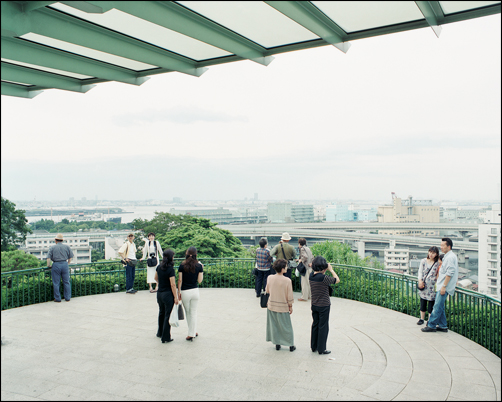The Supersampler is one of a number of cameras produced by the Lomographic Society International, or Lomo for short. This organization is part camera manufacturer, part propaganda machine: on the back of whirlwind marketing campaign, the cameras have found their way into Urban Outfitters, Flight 001 and the gift stores of modern (and contemporary!) art museums around the world. It's an impressive run for a novelty item.

Original Lomo LC-A, the camera that started it all (photo by H4NUM4N)
Part of what's enabled the success of Lomo is its rabid fan base, which is kept in line by sleek promotional emails, a Lomo-only photo sharing website and events to unite the community like the "Lomo World Congress." Lomo has even created its own set of words: "Lomography," "Lomographer," "Lomographic." So far so good--excitement about photography is sweet, and the turnout for the Lomo Congress was astounding! But along with all this comes the official Lomo motto, "don't think just shoot," which sums up the loose artistic manifesto that Lomo has published. Here's where my suspicion creeps in.
Even using a digital camera on full auto mode, all photography is predicated on a moment of choice: when to click the shutter? The simplest toy camera, too, still requires the operator to make these decisions of composition, timing and type of film. It strikes me as disingenuous, then, for Lomography to claim a mode of photography that involves "not thinking." However, we can arrive at a clearer understanding of this motto by considering what "thinking" means, in the context of photography.
Let's spell it out: the distinction between a toy camera and an SLR is purely technical. The Lomographer doesn't have anything to do with images that exhibit photographic technique, like an Ansel Adams print, because they show the care that goes into realizing this sort of image. The viewer of an Ansel Adams print knows that he was, to a very great extent, in control of the image as he produced it. The challenge of using more sophisticated equipment forces the photographer to "think" more about the technical process in order to understand how best to realize his or her vision. "Thinking" here means having the luxury of being sure that this effort will translate directly to the final image.
Even though the difference between the lenses of a Holga and a Mamiya 6 is undeniable, this does not mean that the Lomographer can claim to do away with "thinking." The technical limitations of Lomo cameras force the Lomographer to do away with intention and instead think in terms of experimentation. A different kind of "thinking" comes into play when using a technical system that promotes light leaks, overexposed images and vignetting. The value of the Lomo cameras (speaking generally, not of the actual Lomo camera itself) is that it encourages the photographer to use instinct, rather than forethought, to capture a valuable image. The Lomographer's "thinking" begins only when the camera is raised and ends as soon as the shutter is released--what else could possibly come in to play, given that in most cases there's no exposure, f-stop or focus to "think" about!

Holga, 25 dollars of medium format fun (photo by Oldtasty)
All photographic thinking must occur in terms of a technical process. The Lomographic philosophy makes the mistake of assuming that because Lomographers do not spend much time in thought, that they do not think at all. This is not the case. Lomo has its rallying cry, but there's nothing to rebel against--it's common sense that you wouldn't even try to take the same images with a Lomo as with a Nikon.
A Holga is valuable precisely as a toy, no scare quotes needed. What else are toys for if not to train us to use the real thing?












